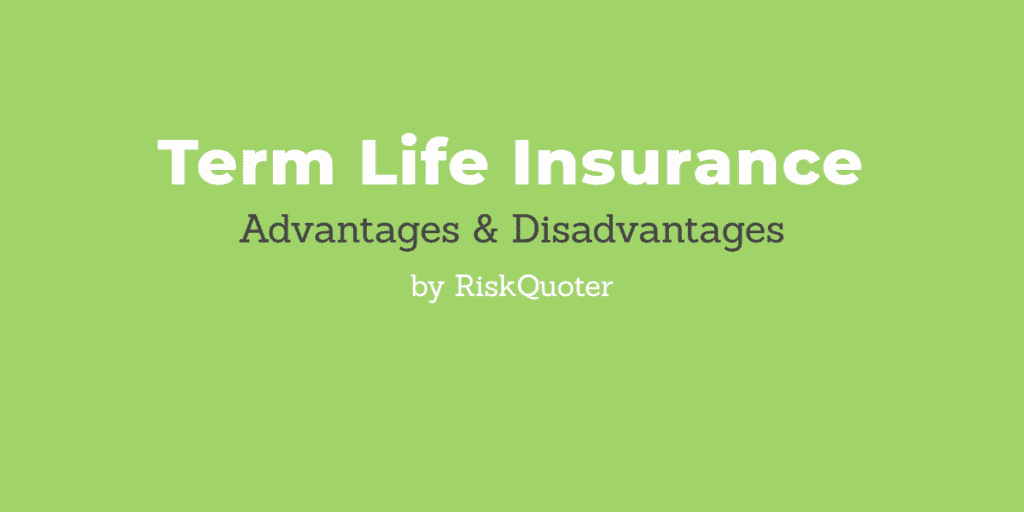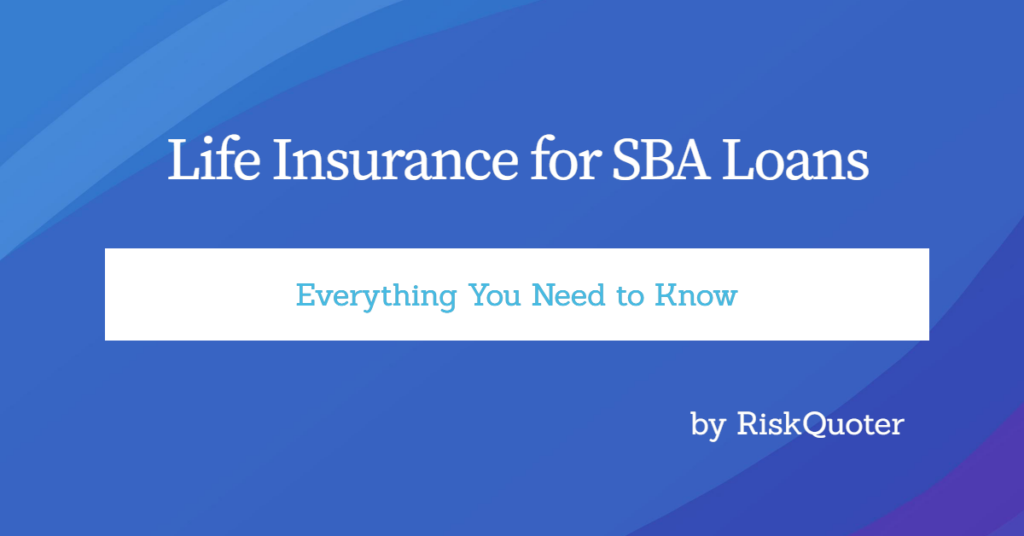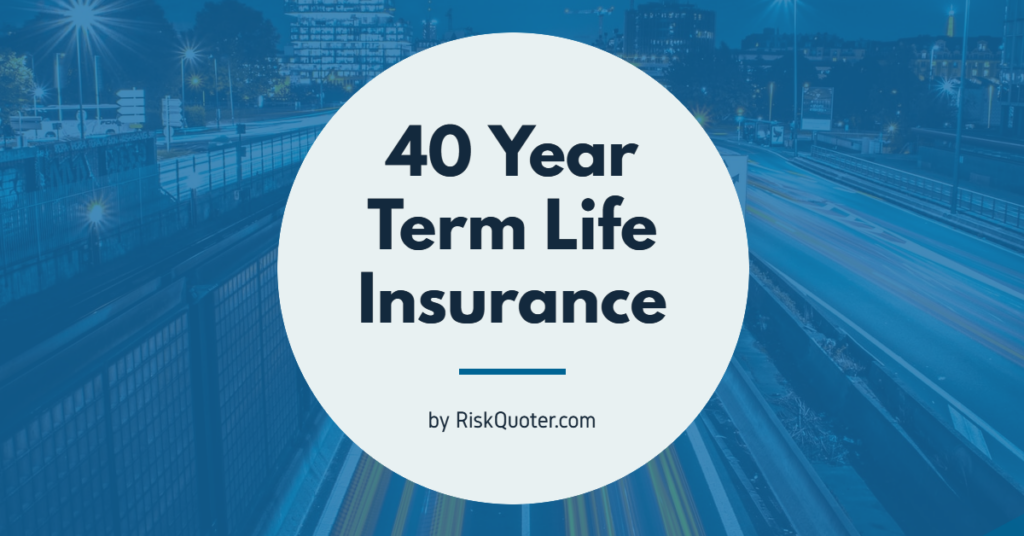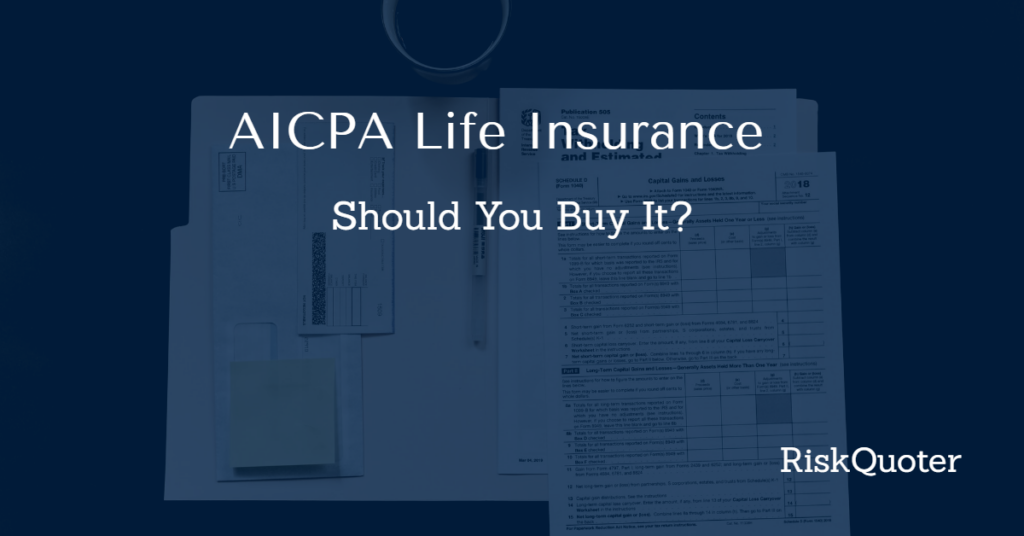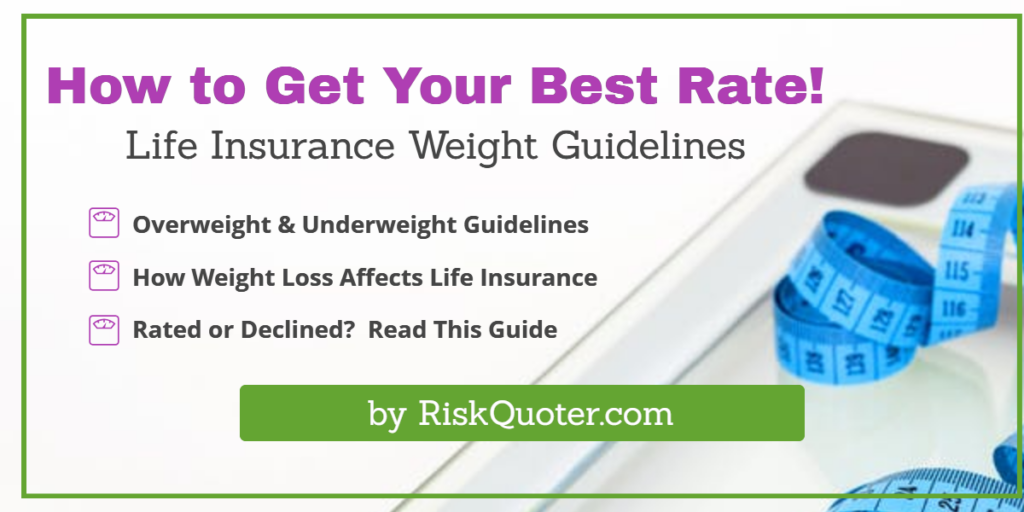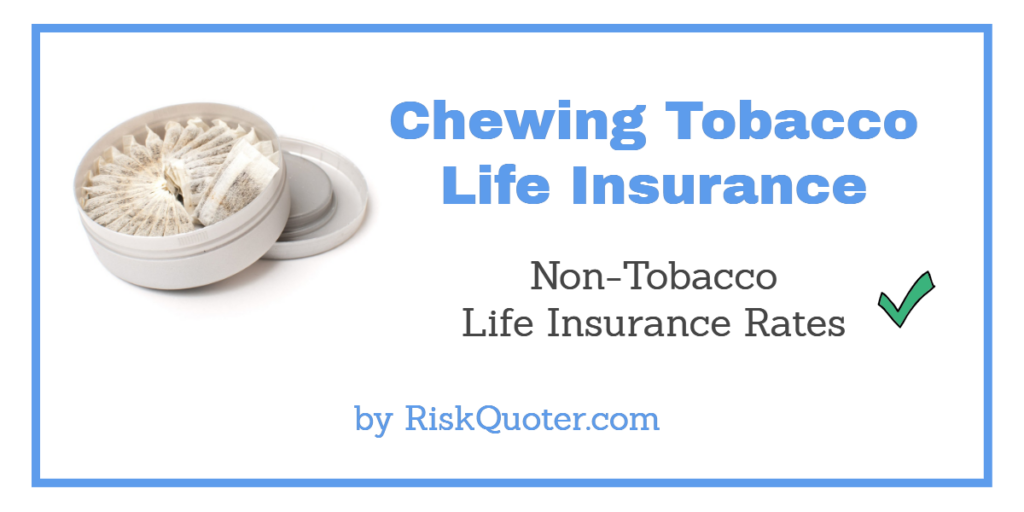Securing the financial future of your loved ones has never been easier, and term life insurance is your key to that peace of mind.
With term life insurance, you have a cost-effective solution that assures your family’s financial stability if you’re no longer there to support them. It’s about ensuring they are well-cared for, even in the face of the unexpected.
Picture a future where your family can live comfortably, continue their education, or maintain their lifestyle, no matter what happens. That’s what term life insurance offers.
And it’s far better than relying on GoFundMe life insurance.
- How Does Term Life Insurance Work?
- Advantages of Term Life Insurance
- Disadvantages of Term Life Insurance
- Choosing the Right Term Length
- How to Choose the Right Term Length
- Term Life Insurance Conversion
- How a Term Life Insurance Conversion Works
- Existing Policy Information
- Conversion Illustrations
- Illustration Options for Conversions
- Conversion Application
- When Should You Consider a Term Life Insurance Conversion?
- Pros and Cons of Life Insurance Conversions
- Life Insurance Conversion Pros
- Life Insurance Conversion Cons
- Group Life vs. Term
- Term Life vs. Universal Life Insurance
- Mortgage Life Insurance or Term Life
- Term Life Insurance vs. ROP
- FAQ
- Final Words
How Does Term Life Insurance Work?
Term life insurance is a type of life insurance that offers coverage for a specific length of time.
The term can range from 1 to 40 years, depending on your chosen company.
The death benefit is paid to your beneficiaries if you die while the coverage is in force.
Term life insurance provides a death benefit if you die from natural causes, health issues, or accidental death.
During the level period, your premium and death benefit remain fixed.
When the level term period ends, your life insurance is still available with most companies as an annual renewable term.
What happens to your term policy at the end of the term varies by company. Some companies keep the death benefit the same but increase your yearly premium.
Other insurers decrease your death benefit at the end of the term and lower the premium.
Continued
Consider the following comparison from 6/13/2023 of a policy that increases the premium at the end of the term vs. a policy that decreases the coverage amount at the end of the term – Female, age 45, preferred best rates, $1 million – 20-year term.
- Premium Increase at End of Term
- Protective Life
- Death Benefit = $1,000,000
- Year 1-20 Annual Premium = $775
- Year 21 Premium = $3405
- Year 21 Death Benefit = $1 Mil.
- Year 30 Premium = $42,475
- Year 30 Death Benefit = $1Mil.
- Death Benefit Decrease at End of Term
- AIG – Corebridge Financial
- Death Benefit = $1,000,000
- Year 1-20 Annual Premium = $780
- Year 21 Premium = $780
- Year 21 Death Benefit = $50,000
- Year 30 Premium = $2464
- Year 30 Death Benefit = $50,000
As you can see, each option has its advantages and disadvantages. The reality is that most people will not keep the policy beyond the level term period.
If anything, you would convert your life insurance to a permanent policy before the term ends.
Most policies pay a lump sum at death, but other life insurance settlement options exist.
This is an ideal type of insurance when you want the most coverage for the lowest price.
Term can be used in some pension max situations, but it needs to be thoroughly reviewed before considering this.
We even make it easy by offering companies with accelerated underwriting and no-exam life insurance for $500k – $3 million.
Many life insurers are doing away with paramed exams. They increasingly use sources like your build from your medical records and the MIB to make their underwriting decisions faster.
Advantages of Term Life Insurance
Why choose term life insurance over other forms of life insurance? Term life insurance is often the most affordable, making it accessible to many individuals.
The premiums are lower than those of whole life insurance and universal life insurance because a term policy doesn’t accumulate a cash value and only covers a specific term.
In addition, term life insurance is straightforward.
It provides a death benefit and doesn’t involve investment components or cash values. This simplicity makes it easy to understand, making it a good option for first-time life insurance buyers and those seeking a death benefit.
Moreover, term life insurance offers flexibility.
You can choose the length of the term based on your family’s needs and financial situation.
For example, if you have young children, you might want a policy that lasts until they are financially independent.
Similarly, suppose your spouse needs help managing the mortgage. In that case, a term policy that lasts until the mortgage is paid can offer substantial peace of mind.
Disadvantages of Term Life Insurance
The biggest disadvantage of term life insurance happens when you reach the end of your level term but realize that you still need coverage.
If you’ve developed health issues since buying your policy, new coverage may not be affordable.
As mentioned, maintaining coverage when it reaches the annual renewable phase can be costly.
Choosing the Right Term Length
There is no one-term-length-fits-all answer.
Choosing the proper term for your term life insurance is critical. You want to ensure you’re covered when your loved ones are most financially vulnerable.
According to life insurance statistics, the 20-year term life policy is the most common, but that may or may not be your best option.
The duration of coverage depends on your specific needs and situation. You probably have multiple reasons for buying coverage, from mortgages, income replacement, education, etc., and you have to think about how long those obligations will be around.
Life insurers offer many durations, including:
- 1 Year Term
- 5 Year Term
- 10 Year Term
- 15 Year Term
- 20 Year Term
- 25 Year Term
- 30 Year Term
- 35 Year Term
- 40 Year Term
One life insurer, AIG – Corebridge Financial, offers 16 – 30 years in one-year increments.
Usually, your policy becomes an annual renewable at the end of the level period.
And while most companies allow you to renew up to age 90-95, the price jumps dramatically, and/or the death benefit decreases to a fraction of the original policy.
Bottom line – Choose your term length carefully because you won’t keep the policy when the term ends.
How to Choose the Right Term Length
When you buy a new policy, choosing the correct term length is essential because you can’t change it later.
Consider these points before choosing:
- Match your term to the duration of time you need coverage
- Maybe buy multiple term lengths if your needs vary
- Consider terms slightly longer than your expected need
- Don’t forget that price increases with longer terms.
- Take the time to properly determine your life insurance needs.
If you have a mortgage, consider a 30-year policy.
You can buy multiple policies with different term lengths or one with riders to accomplish the same.
Are you looking for coverage to replace your income?
Plan on retiring in 15 years? Take a look at 20-year terms, in case you keep working.
We recommend our Life Insurance 101 guide if you need a quick application process overview.
Do you need life insurance for SBA life insurance or key person life insurance? Term policies are great.
Term Life Insurance Conversion
What is a term life insurance conversion period?
A term life insurance conversion allows you to trade your term policy for a universal or whole life policy.
Most (but not all) term life insurance policies have the option to convert it to permanent coverage with no further medical underwriting.
And while that is an excellent feature of term policies, you need to know the pros and cons of term conversions.
How a Term Life Insurance Conversion Works
A term life insurance conversion is relatively simple because there is no medical underwriting.
Every life insurance conversion needs the following:
- Existing Policy Information
- Conversion Illustrations
- Conversion Application
But don’t worry; we’ll help you put this together even if we weren’t your original insurance agent.
Existing Policy Information
The first step is to get the following on the existing term life insurance policy.
- Policy Number
- Policy Date
- Conversion Period
- Your Original Underwriting Health Class
- The Coverage Amount
- Ownership and beneficiary information
The conversion period varies by the company, with some privileges lasting the entire term length.
If you’re younger, you may be able to convert your term policy for 40 years.
If you bought your policy through a niche program like Costco life insurance or from the AICPA, your conversion options are limited.
A conversion may also be used for pension max situations.
Other policies, like accidental death, do not have conversion available.
We use the above information to determine which products are available for conversion.
Conversion Illustrations
Did you know that there are almost endless possibilities when illustrating a universal life or whole life insurance policy?
It’s true, and it can be challenging to understand the 10-30 page illustrations that insurance companies provide.
You must choose premium payments, death benefits, policy withdrawals, and riders.
That’s where we can be helpful to you.
Once we know your objective with the conversion, we can provide the illustrations that best fit your needs.
We have access to the illustration systems for the best life insurance companies.
Illustration Options for Conversions
As mentioned, options are endless, but we’ll guide you through the life insurance process.
Premium Payment Choices Include:
- Pay premiums every year until death
- Limited years – Pay until age 65 or pay for ten years
- Specified Premium – Pay “x” amount
- Skip Years – Paying a premium, skipping a year, resuming payments
Death Benefit Choices Include:
- Full conversion of the term policy
- Partial conversion of the term policy
- Guaranteed Death Benefits
- Non-Guaranteed Death Benefits
- Increased Death Benefit (may require underwriting on the increase)
- Endowment Death Benefit
- Zero cash at 100 Death Benefit
Policy Withdrawals and Riders:
You can also choose life insurance riders for your conversion policy.
Conversion Application
Once you’ve chosen your option, you sign the related illustration and conversion application to submit to the home office.
The home office takes 10-14 business days to complete the process and issue the new policy.
If you are doing a partial conversion, the home office will address this with a new policy for the conversion and a change letter for the reduced term policy.
When Should You Consider a Term Life Insurance Conversion?
In our experience, most term life insurance conversions happen when the insured develops a significant health issue or is looking to sell their policy for a life settlement.
The conversion privilege allows you to have lifetime coverage that you won’t outlive.
And because you don’t have to qualify medically with a conversion, it’s a simple process.
That’s especially helpful if you would have ended up with a table rating or flat extra due to a health condition.
Suppose you are selling your policy for a life settlement. In that case, we can help you get the correct illustration as settlement companies have specific guidelines they want to see illustrated.
Pros and Cons of Life Insurance Conversions
Before converting your life insurance policy, consider these pros and cons.
While the life insurance statistics show that most people will not convert their policy, it’s a significant benefit if you need it.
Life Insurance Conversion Pros
- No medical underwriting required – You won’t get declined!
- No paramedical exams.
- Premiums are based on your health rate class when you bought coverage
- Lifetime coverage is available
- You may be able to add helpful riders
- A convertible policy allows you to sell the policy
- You may be able to convert a portion of your policy
If you or your spouse have life insurance, a term conversion can be beneficial when you become a senior.
For example, if you no longer need your entire one-million-dollar policy, you may be able to convert a portion of your coverage to a final expense policy.
Business owners may also find conversion features attractive. You can use the coverage as collateral for an SBA loan and convert it for key person life insurance.
A conversion privilege is a good idea if you have a risky occupation, such as a police officer, firefighter, or other occupation where you can be injured.
Depending on your individual needs, it may make sense to look at a new policy vs. converting your existing policy.
Life Insurance Conversion Cons
- Your premium increases substantially for the whole or universal life policy.
- Premiums are based on your current age.
- Some companies limit the conversion products available.
- Conversion choices may decrease with older policies.
We’ll tell you what types of life insurance are available for conversion.
A conversion may not be your best option if your health has improved since you first took out your policy.
Riders
Most policies offer additional benefits such as accidental death, child coverage, accelerated benefits, etc.
For detailed information, check out our guide – Life Insurance Riders
Group Life vs. Term
There is no comparison.
You own and control term life, while your employer controls group life.
Leave your job or lose your job, and you lose your group coverage.
No big deal, right? If you develop a significant health issue, you may have problems.
When comparing term life insurance quotes vs. group life insurance, look at the pros and cons of each.
Group Life Insurance Pros vs. Cons
Pros
- Easy application process
- No health questions for base coverage
- Paid for by the employer
- Coverage may increase with salary
- Some policies are portable if you leave
- May allow conversion to permanent insurance
Cons
- Rate increases every five years
- Additional coverage requires medical review
- The employer may cancel the plan
- If you leave your job you can lose coverage
- Some policies are not portable
- Permanent policy pricing may not be favorable
Term Insurance Pros vs. Cons
Pros
- You have 100% control over policy
- Premium is fixed for the term length chosen
- Conversion options are more favorable
- Pricing is more favorable at greater coverage amounts
Cons
- Underwriting may take 6-8 weeks
- A paramedical exam may be required
- Health issues may be costly
With group life insurance, the base amount given to employees for free is great and should be accepted.
If you are looking at supplemental group coverage like the AICPA offers, compare that to an individual policy.
While not a group policy. Costco term life insurance is available to members.
Term Life vs. Universal Life Insurance
Universal life insurance is permanent life insurance that can potentially accumulate cash value.
There are many variations of universal life insurance available, including:
- Index Universal Life
- Guaranteed Universal Life (GUL)
- Cash Value Accumulation Universal Life
- Survivorship Universal Life
On the other hand, a guaranteed universal life (GUL) works similarly to a term life policy. The GUL provides a guaranteed death benefit (to age 120 with some policies) with little cash value.
Term Life Insurance with Cash Value
Did you know you can now buy a term life insurance policy that builds cash value?
It’s true! Kansas City Life Insurance Company introduced its Longevity Term Life Insurance product.
This term product offers:
- A Guaranteed Cash Surrender Value
- Paid Up Insurance Benefit
- Extended Term Insurance
It’s the only product of its kind that offers term life with features commonly found in a permanent life insurance product.
Mortgage Life Insurance or Term Life
When comparing term vs. mortgage life,
The premiums for both policies remain level for the term.
The difference concerns the coverage amount and how it gets paid out.
Mortgage life insurance coverage decreases yearly with your mortgage, but your premium remains level.
The death benefit gets paid directly to the mortgage company if you die.
On the other hand, a term life insurance policy has a level premium and death benefit.
Furthermore, the proceeds get paid to the beneficiary you name, such as your spouse.
For other loans, such as a business loan, a level term life with a collateral assignment ensures the bank only receives what is owed, with the balance to your beneficiaries.
Term Life Insurance vs. ROP
If you like getting money back from your term life, an ROP – Return of Premium policy may be a good fit.
With the ROP term, the life insurer refunds all premiums you paid at the end of the term.
ROP may sound like a good deal (and it can sometimes be), but remember that your ROP will be more expensive.
If you have longevity in your family history, ROP may be a good option when you outlive your term.
Underwriting for most life insurance policy types is similar, although some policies allow you to skip the life insurance medical exam.
FAQ
Term life insurance is worth it because it provides the most coverage for the lowest price compared to whole life or universal life insurance.
Term life insurance is temporary, providing coverage for a specified duration, while whole life insurance builds cash value and can last a lifetime.
If you outlive your term life insurance, your beneficiaries receive nothing. But keep in mind two things. First, your term life insurance is most likely convertible to permanent life insurance before the level term period ends. Secondly, even when the level term period ends, most term policies become an annual renewable term to age 95.
When your term life insurance expires, you may have several options, including converting your policy to permanent life insurance, replacing it with a new term policy, lapsing it, or selling it for a lump sum.
No, term life insurance does not have a cash value. However, some policies offer a return of your premium if you cancel the policy.
Group term life insurance is the coverage offered by your employer. Most employers have a base amount of life insurance provided to all employees and an additional amount that employees may purchase.
You may be able to sell your term life insurance policy if you are older (age 65+), the policy has a conversion privilege available, and your health has declined. It’s called a life settlement.
Term life insurance is not taxable in most situations. There may be a tax question in some instances (typically for business insurance cases). Always consult your accountant for tax advice.
Final Words
Term life insurance provides financial protection for your loved ones, securing their future in the event of your untimely death. Its simplicity, affordability, and flexibility make it a choice for many.
Remember, it’s crucial to understand what term life insurance means and how it works before committing to a policy. Take the time to compare term life insurance quotes and consider each company’s different features and benefits to ensure you’re making an informed decision.
Armed with the correct information and a clear understanding of your needs, you’ll be well on your way to finding the term life insurance policy that offers peace of mind and the protection your family deserves.
Request a quote, and we’ll help you select a policy tailored to your needs and budget.
Recent Articles

